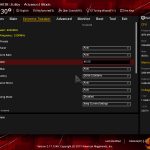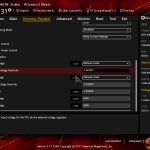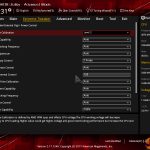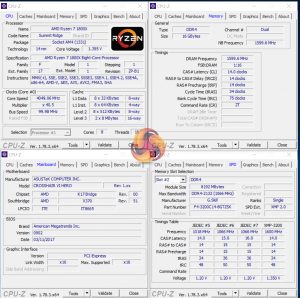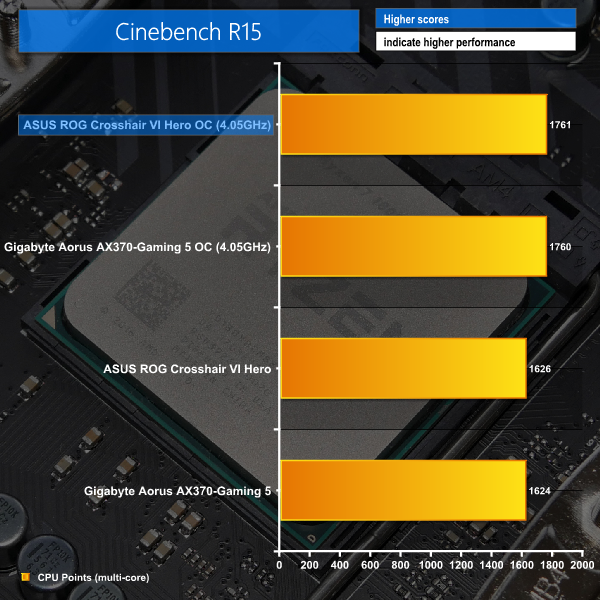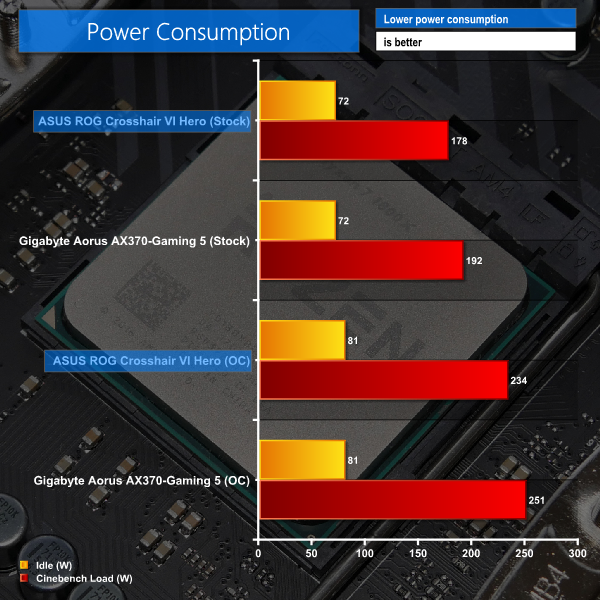Manual CPU Overclocking:
To test the ASUS ROG Crosshair VI Hero motherboard’s CPU overclocking potential, we aim to set the CPU voltage close to 1.40V. CPU VCore is set to 1.40V, SOC voltage is set to 1.25V, and we applied the Level 2 LLC setting.
We maintained the DRAM frequency at 3200MHz to take its stability out of the overclocking equation.
ASUS' logical UEFI layout aids the simplicity of overclocking. The primary settings that should be adjusted, such as the CPU ratio and VCore, are all displayed in the main Extreme Tweaker page. Loadline calibration settings are hidden in the External Digi+ Power Control subsection, probably because the settings provided by ASUS make little sense.
There is no visual or numerical interpretation of how the selected LLC setting will influence CPU VCore. We found Level 3 to provide a voltage far from our targetted level under load. Level 2 tended to deliver around 1.395-1.417V under Cinebench load and around 1.46V when idling. This was using a UEFI-set 1.40V for the CPU VCore. ASUS needs to provide better interpretation of how the LLC settings will influence CPU voltage.
We were able to hit 4.05GHz using around 1.4V CPU VCore, which seems to be the highest level that our Ryzen 7 1800X likes to overclock to. Pushing up to 4.1GHz demands a large increase in voltage and the acceptance of flaky stability. 4.05GHz was Cinebench stable for five back-to-back runs with the ASUS Crosshair VI Hero.
1.40V user-selected CPU VCore and Level 2 LLC allowed 1.395V to be delivered during Cinebench loading. This value sometimes jumped up to the next voltage step which is 1.417V. A 22mV spread in neighbouring voltage steps is higher than I like to see for a £250 motherboard with overclocking as one of its focal points.
Overclocked Performance
As a performance comparison, we have included the results from the Gigabyte Aorus AX370-Gaming 5 AM4 motherboard. The maximum overclocked configuration achieved with each board was a 4050MHz (40.5 x 100MHz) processor frequency whilst using 3200MHz CL14 memory.
Pushing up from the Ryzen 7 1800X's stock all-core 3.7GHz frequency to a 4.05GHz overclock provided an additional 135 points in Cinebench for the ASUS motherboard. An 8% increase in performance is a decent improvement.
Power
We leave the system to idle on the Windows 10 desktop for 5 minutes before taking a reading. For CPU load results we run Cinebench multi-core and take a reading. The power consumption of our entire test system (at the wall) is shown in the chart.
Power consumption for the Crosshair VI Hero was a strength compared to the Gigabyte AX370-Gaming 5. Idle power consumption figures are skewed by the efficiency curve of our 1000W PSU being limited at idle power draw levels. However, the loaded ASUS system draws a little less power than the Gigabyte competitor.
Overclocking the 1800X adds over 50W to the load power draw. With 234W of power being drawn from the wall, much of which will feed through the VRM and CPU, strength of the power delivery system is clearly an important factor for ASUS' Crosshair VI Hero.
Be sure to check out our sponsors store EKWB here
 KitGuru KitGuru.net – Tech News | Hardware News | Hardware Reviews | IOS | Mobile | Gaming | Graphics Cards
KitGuru KitGuru.net – Tech News | Hardware News | Hardware Reviews | IOS | Mobile | Gaming | Graphics Cards


